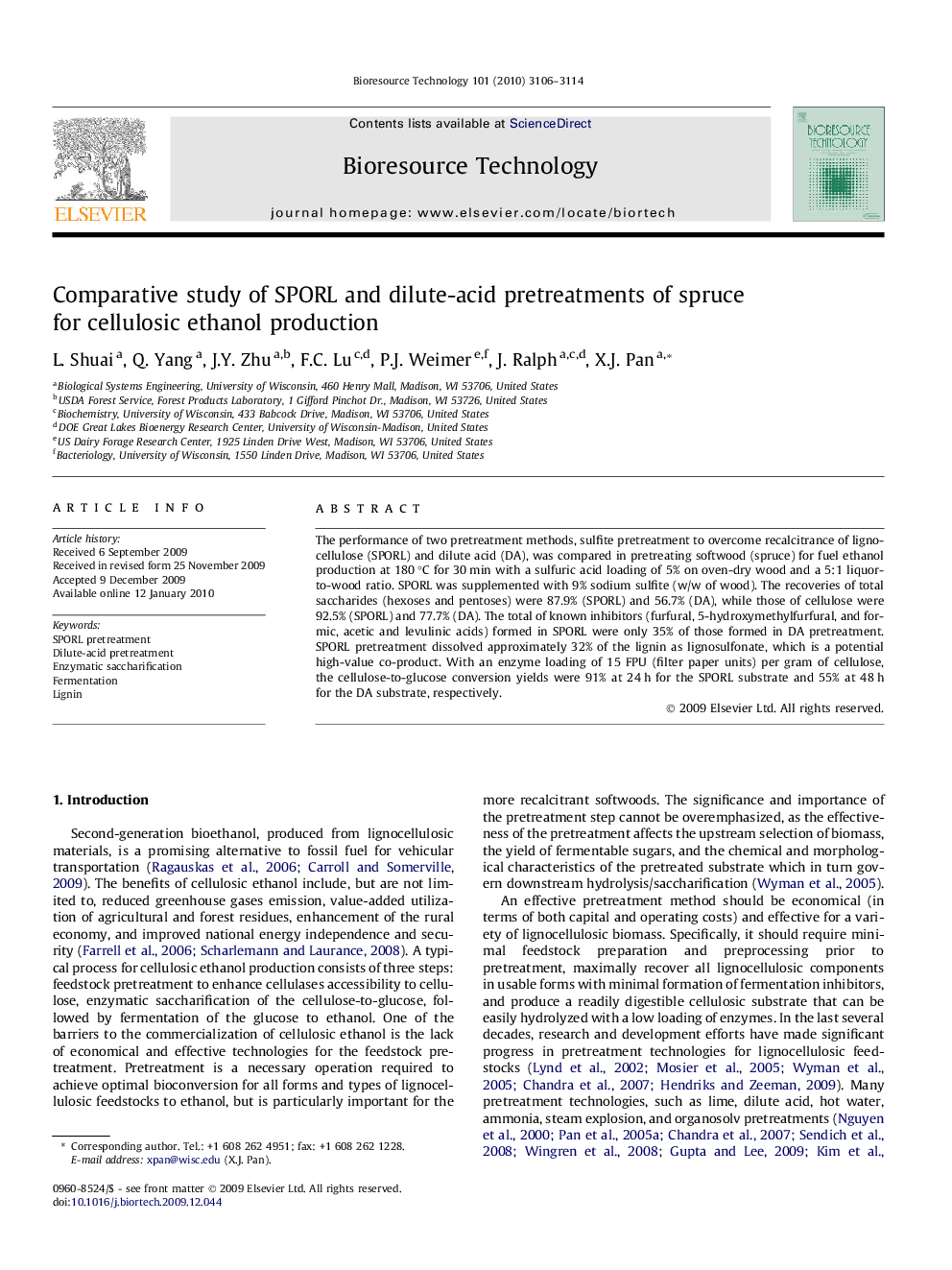| Article ID | Journal | Published Year | Pages | File Type |
|---|---|---|---|---|
| 683653 | Bioresource Technology | 2010 | 9 Pages |
The performance of two pretreatment methods, sulfite pretreatment to overcome recalcitrance of lignocellulose (SPORL) and dilute acid (DA), was compared in pretreating softwood (spruce) for fuel ethanol production at 180 °C for 30 min with a sulfuric acid loading of 5% on oven-dry wood and a 5:1 liquor-to-wood ratio. SPORL was supplemented with 9% sodium sulfite (w/w of wood). The recoveries of total saccharides (hexoses and pentoses) were 87.9% (SPORL) and 56.7% (DA), while those of cellulose were 92.5% (SPORL) and 77.7% (DA). The total of known inhibitors (furfural, 5-hydroxymethylfurfural, and formic, acetic and levulinic acids) formed in SPORL were only 35% of those formed in DA pretreatment. SPORL pretreatment dissolved approximately 32% of the lignin as lignosulfonate, which is a potential high-value co-product. With an enzyme loading of 15 FPU (filter paper units) per gram of cellulose, the cellulose-to-glucose conversion yields were 91% at 24 h for the SPORL substrate and 55% at 48 h for the DA substrate, respectively.
